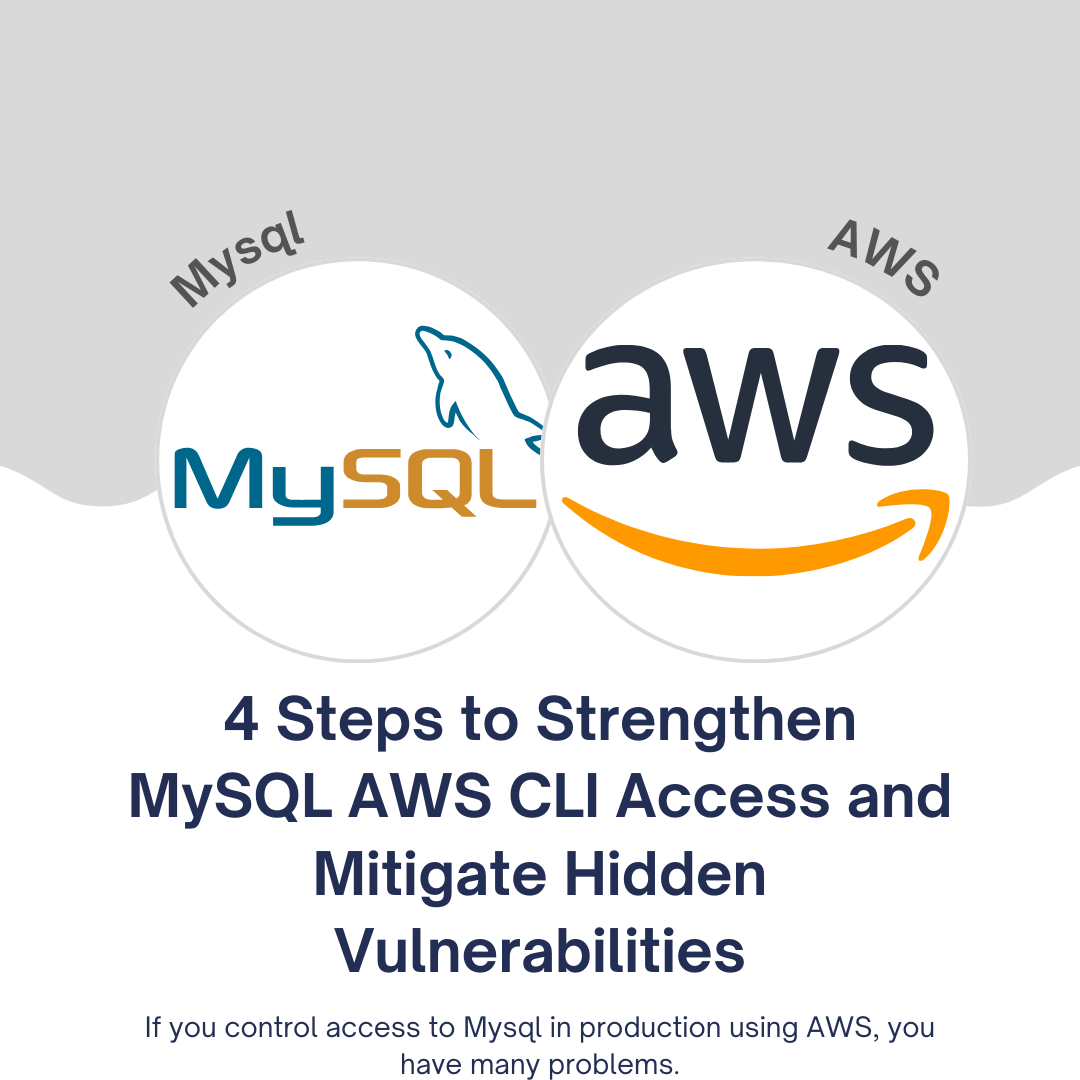4 Steps to Strengthen MySQL AWS CLI Access and Mitigate Hidden Vulnerabilities

In today's fast-paced technological landscape, ensuring swift and secure access to your MySQL databases hosted on AWS is crucial for maintaining product speed and resolving incidents promptly. Unfortunately, many organizations encounter several challenges and vulnerabilities when it comes to managing MySQL access through the AWS CLI. In this article, we'll delve into the five major issues associated with AWS CLI access to MySQL, their impacts, and practical steps to mitigate these hidden vulnerabilities.
The Challenge of MySQL Access via AWS CLI
Accessing MySQL databases through AWS CLI can be riddled with complications that extend beyond the surface. These issues not only pose security risks but also hinder workflow efficiency, potentially causing disruptions and delays. Let's explore these challenges in detail.
Problem 1: Building Infrastructure for MySQL Access is Painful
One of the foremost issues is the cumbersome process of constructing the infrastructure required for MySQL access via AWS CLI. This often involves complex configurations and can be time-consuming.
Problem 2: Hidden Vulnerabilities in Access Management
Within the realm of MySQL access management via AWS CLI, several hidden vulnerabilities exist, which are seldom addressed but present significant security risks. These include:
1. Single Sign-on (SSO) & Multi-Factor Authentication (MFA)
Lack of robust SSO and MFA capabilities can lead to unauthorized access and increased security risks.
2. Audit Trials and Personally Identifiable Information (PII) Protection
Inadequate audit trials and insufficient PII protection can jeopardize data security and compliance with regulations such as GDPR, PCI, SOC2, and HIPAA.
3. Compliance Challenges
Meeting industry-specific compliance standards, such as GDPR or PCI, can be challenging without the necessary MySQL access features.
4. Developer Experience
A poor developer experience can hinder productivity and increase the risk of errors during MySQL access.
Mitigating Hidden Vulnerabilities
To address these issues and mitigate the hidden vulnerabilities associated with MySQL AWS CLI access, organizations can follow these four practical steps:
Step 1: Implement SSO and MFA
- Utilize Existing Systems
If your organization already uses Google Workspaces, you can integrate Google OAuth for SSO and MFA, eliminating the need for additional LDAP directories.
- Seek Compatible Tools
Look for tools like Cloud Shell solutions from AWS or Google Cloud, or consider options like Runops to streamline SSO and MFA implementation.
- Prioritize Over LDAP
While LDAP offers advanced features, prioritize SSO and MFA through Google OAuth for quicker results and reduced complexity.
Step 2: Tailor MySQL Access to Industry Needs
- Industry-Specific Requirements
Different industries have varying MySQL access requirements. Prioritize features based on your industry's needs, focusing on developer experience, SSO, and MFA.
- Streamline Workflows
Minimize the steps required for MySQL access to enhance efficiency and productivity.
Step 3: Leverage Unified Access Solutions
- Simplify Management
Consider tools that provide unified access solutions, covering MySQL, AWS/GCP, other databases, Kubernetes, and servers within a single platform. Tools like Runops offer comprehensive access management.
- Optimize User Experience
Sacrificing a slightly worse user experience across all access types for the convenience of a single tool is often a more efficient approach.
Step 4: Add Friction to Unwanted Access Methods
- Discourage Unsecure Access
To deter the use of insecure access methods, add friction to the process. For example, implement form submissions or Jira requests for access to AWS web consoles, making them less convenient than the preferred methods.
- Gradual Improvement
Over time, refine and enhance the preferred access methods to make them more user-friendly than the alternatives.
By following these four steps, organizations can effectively address the hidden vulnerabilities of MySQL AWS CLI access, bolster security, streamline workflows, and ensure a smoother experience for both developers and administrators.
